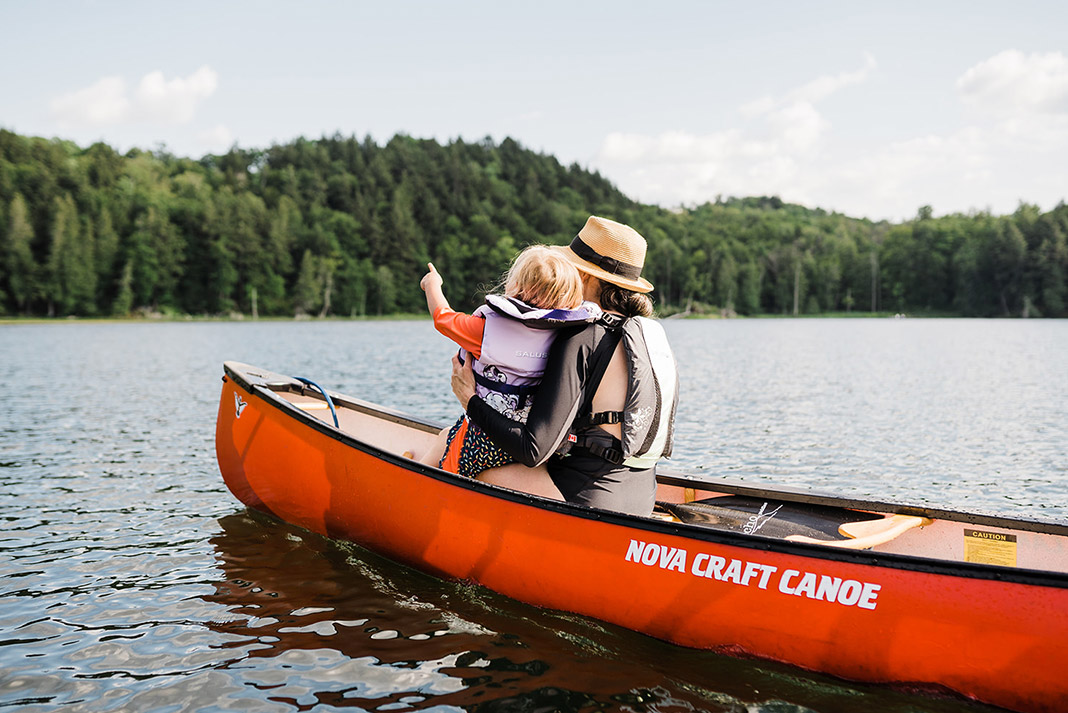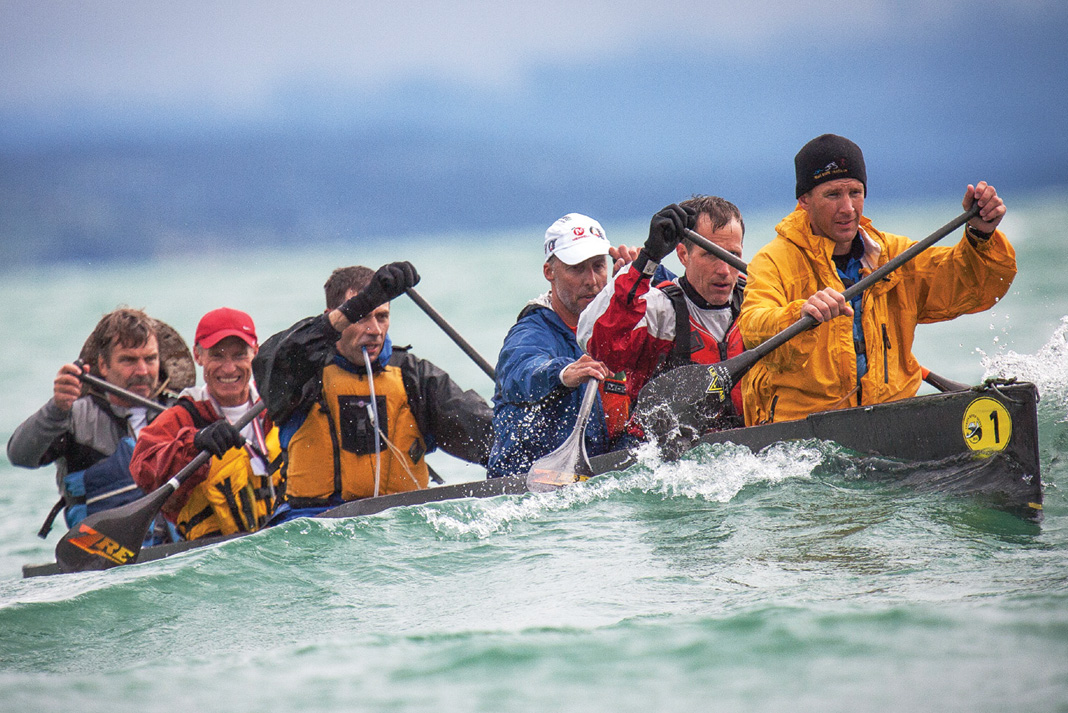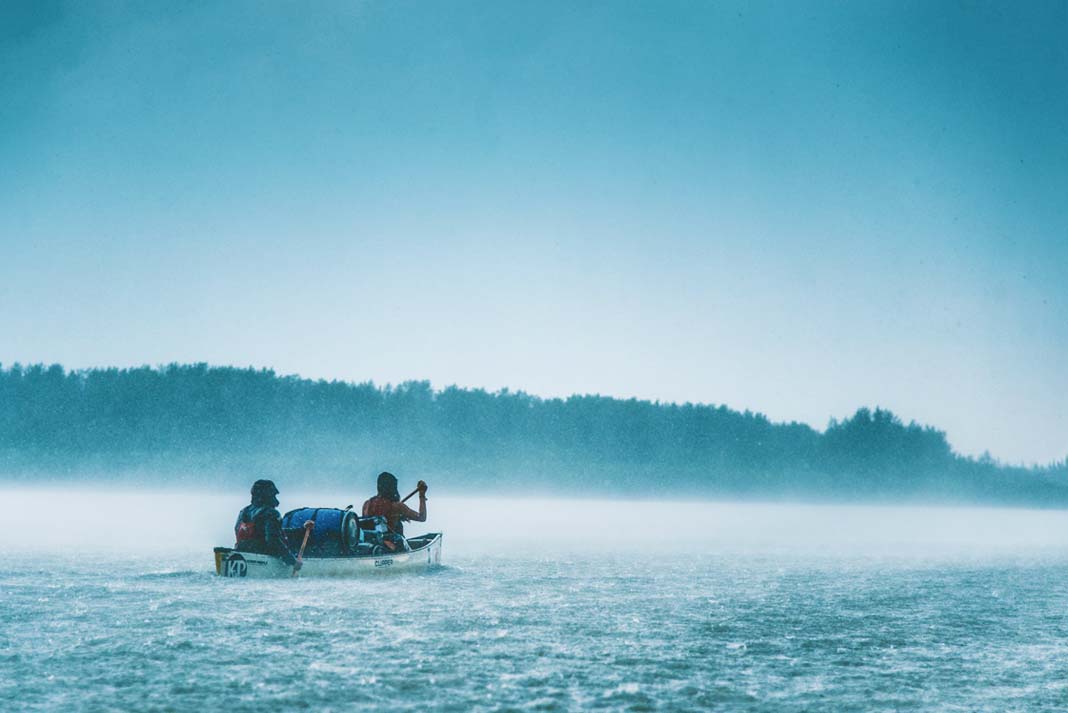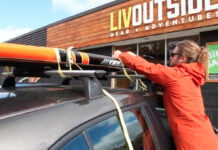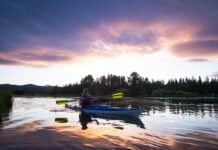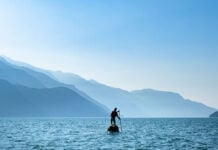Windy days on the water can be exhilarating or frightening, depending upon how you face the challenges they present. By keeping in mind these tips for safe passage, you can cut out the frustration and paddle your canoe on to more sheltered waters.
Here’s our best advice for canoeing in the wind, to keep you safe and frustration-free.
Make safe passage: 7 tips for canoeing in the wind
1 Maintain trim
Your canoe is a weathervane in wind. Avoid pinwheeling by weighing the bow down one to two inches when traveling upwind and weighing down the stern in a tail wind. Don’t go overboard with this method; an end that rides too deep may take on waves.
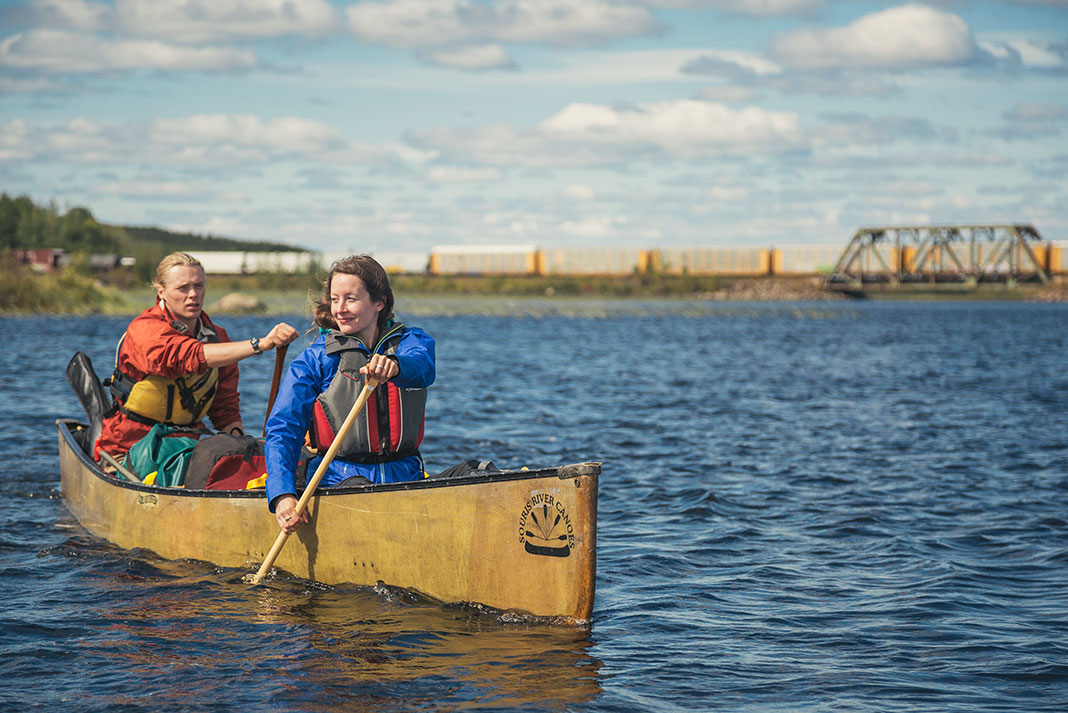
2 Quartering waves
The most common advice canoeists receive for travel on windy days is to quarter waves. This means paddling into big waves at a 30- to 45-degree angle, which is effective because it allows the craft to fit between wave crests. While this technique promises a drier ride and a craft that rises faster to meet oncoming waves, it’s not for everyone.
A canoe quartering waves is constantly on the verge of broaching to the wind. One mistake and it’s a potential capsize. For this reason, quartering waves is for experienced paddlers only. Beginners are safer to move closer to the center of the boat, thereby lightening the bow and stern, and paddle head-on into the wind.
3 Running sideways
How your canoe handles waves is generally determined by wave length, rather than wave size. If you have an 18-foot-long canoe and the waves are spaced 14 feet apart, you’re in for a wet ride. Facing those waves head-on could mean swamping.
If head-on running results in a dangerously wet ride and you can’t hold a quartering course, try running broadside to the waves, paddling in the trough between them. Your canoe will fit between the waves and bob like a cork, up one face and down another.
4 Tacking
If you’re looking to paddle to a distant point but are confronted with a side wind, try tacking. If you paddle directly toward your destination, a strong side wind will blow your canoe off course and result in having to paddle back upwind. The solution is to aim 45 degrees upwind of your target and paddle hard—the wind will take you straight to your mark.
5 Same side
Despite what you’ve heard, it’s sometimes okay for canoeists to paddle on the same side. Paddling on the same side—in unison—is the right choice when you can’t hold the course in a quartering or side wind. Paddle on the downwind side of your boat.
6 Rest stop
Take advantage of quiet-water wind eddies that form in bays and around points. Conserve your strength by darting quickly from one protected spot to another, then resting briefly before powering on to the next calm place.
7 Big crossing
Make all open water crossings short and fast by crossing at the narrowest point when possible. Plan on paddling one mile an hour in a heavy headwind and five miles an hour in a tail wind. I’m suspicious of any crossing more than half a mile long with a headwind or five miles long with a stern wind, and will consider changing or delaying my route to avoid it.
Wind can create some tricky conditions, but these tactics will help. | Feature photo: Image Ontario


